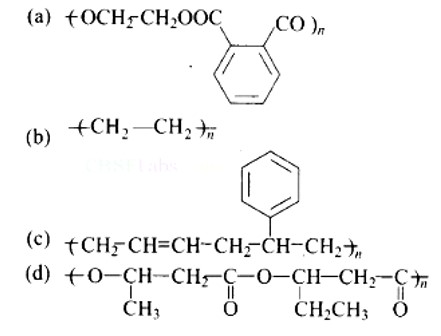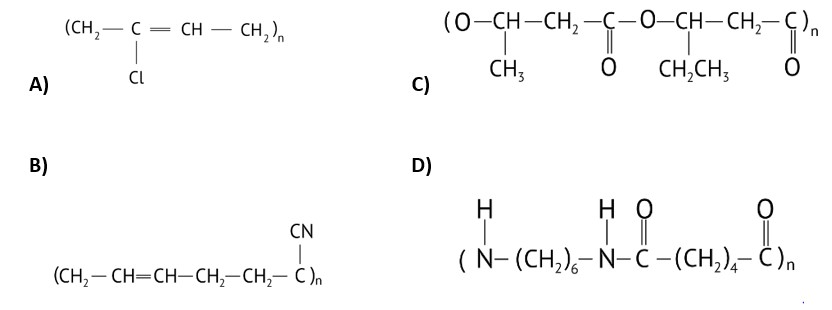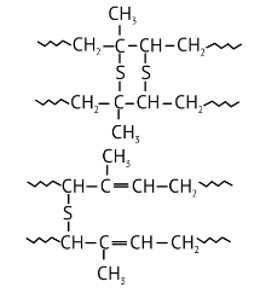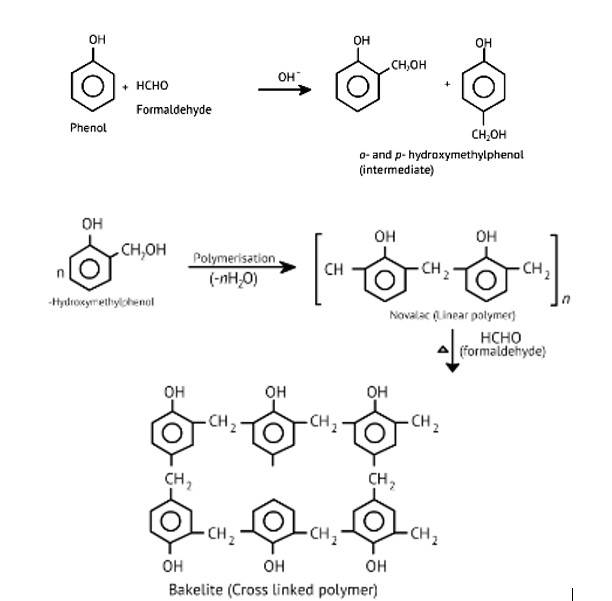Chemistry NCERT Exemplar Solutions Class 12th Chapter Fifteen
Get insights from 85 questions on Chemistry NCERT Exemplar Solutions Class 12th Chapter Fifteen, answered by students, alumni, and experts. You may also ask and answer any question you like about Chemistry NCERT Exemplar Solutions Class 12th Chapter Fifteen
Follow Ask QuestionQuestions
Discussions
Active Users
Followers
New answer posted
5 months agoContributor-Level 10
This is a multiple choice answer as classified in NCERT Exemplar
Option (B)
Explanation: Low-density polythene is obtained from the polymerization of ethane under high pressure and temperature. Low-density polyethylene is tough, a poor conductor of electricity and has a highly branched structure.
Low-density polythene is not hard because branched structure prevents stacking and thus, reduces the intermolecular force of attraction.
So, option (B) is correct.
New answer posted
5 months agoContributor-Level 10
This is a multiple choice answer as classified in NCERT Exemplar
Option (A)
Explanation: Dacron or Terylene is formed by the condensation polymerization of ethylene glycol and phthalic acid with the elimination of water molecules. The structure of Terylene is,
New answer posted
5 months agoContributor-Level 10
This is a multiple choice answer as classified in NCERT Exemplar
Option (C)
Explanation: PHBV (Poly beta-hydroxybutyrate co-beta-hydroxy valerate) is a biodegradable polymer. It undergoes bacterial degradation in the environment. The structure is shown as,
New answer posted
5 months agoContributor-Level 10
This is a multiple choice answer as classified in NCERT Exemplar
Option (B)
Explanation: Polyacrylonitrile is used as a wool substitute in the manufacture of commercial fibers such as orlon or acrilan.
New answer posted
5 months agoContributor-Level 10
This is a multiple choice answer as classified in NCERT Exemplar
Option (A)
Explanation: Semi-synthetic polymers are obtained from natural polymers. Cellulose derivatives like cellulose nitrate, cellulose acetate rubber are examples of semi-synthetic polymers.
Cis-polyisoprene is not a semi-synthetic polymer while other examples are semi-synthetic polymer.
New answer posted
5 months agoContributor-Level 10
This is a multiple choice answer as classified in NCERT Exemplar
Option (D)
Explanation: Glycogen is a branched polymer of glucose found in the liver, muscles, and brain of animals.
New answer posted
5 months agoContributor-Level 10
This is a Long Answer Type Questions as classified in NCERT Exemplar
Ans: While manufacturing tyre rubber, 5 % sulfur is used as a crosslinking agent. A natural linear polymer of 2-methyl-1, 3-butadiene becomes hard on treatment with sulfur and forms vulcanised rubber. The structure of the product formed is,
New answer posted
5 months agoContributor-Level 10
This is a Long Answer Type Questions as classified in NCERT Exemplar
Thermoplastic polymer
Thermoplastic polymers are linear or slight branched-chain polymers. In this type of polymer, the strong intermolecular force of attraction is present between elastomers and fibers. This type of polymer softens on heating and hardens on cooling. For example, polythene, polystyrene and polyvinyl.
Thermosetting polymer
Thermosetting polymers are cross-linked polymers. These polymers on heating undergo cross-linking in molds. They become infusible on heating so, cannot be reused again. For example, Bakelite and urea-formaldehyde resins.
New answer posted
5 months agoContributor-Level 10
This is a Long Answer Type Questions as classified in NCERT Exemplar
Ans:


New answer posted
5 months agoContributor-Level 10
This is a Long Answer Type Questions as classified in NCERT Exemplar
The oldest synthetic polymers are phenol-formaldehyde polymers. These are made by combining phenol and formaldehyde in the presence of either an acid or a base catalyst. The reaction begins with the formation of o-and/or p hydroxymethyl phenol derivatives, which then react with phenol to form compounds with shaving rings connected by –CH2 groups. The first product could be a linear product, such as Novolac.
When heated with formaldehyde, Novolac crosslinks to form Bakelite, an infusible solid mass.
It is used to make combs, phonograph records, electrical switches, and
Taking an Exam? Selecting a College?
Get authentic answers from experts, students and alumni that you won't find anywhere else
Sign Up on ShikshaOn Shiksha, get access to
- 65k Colleges
- 1.2k Exams
- 681k Reviews
- 1800k Answers






